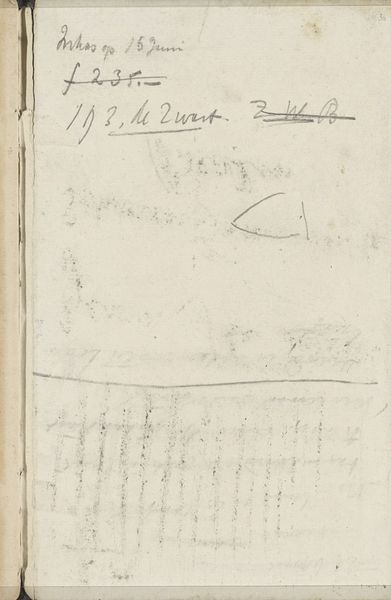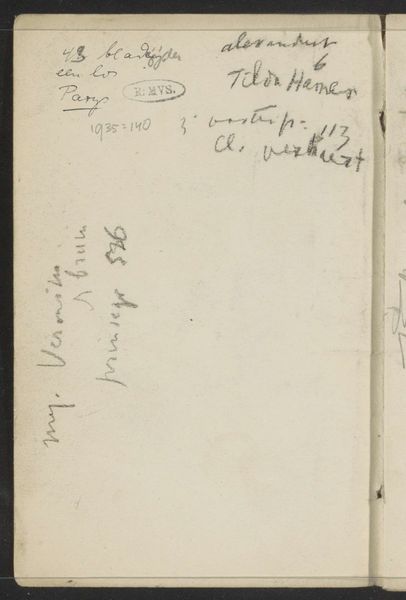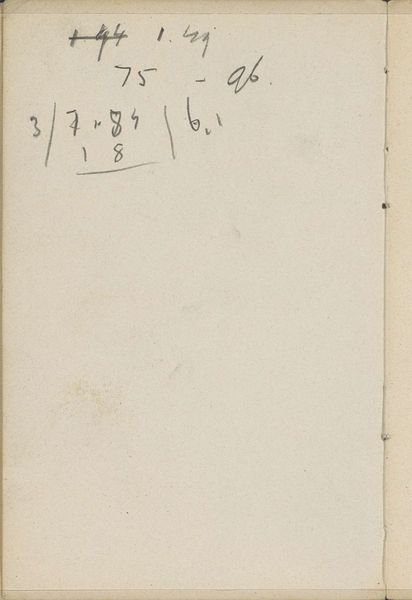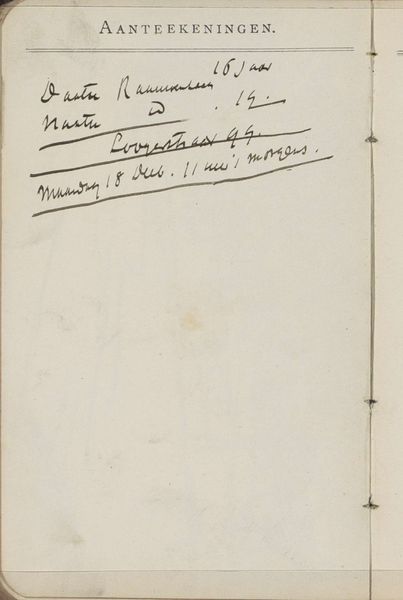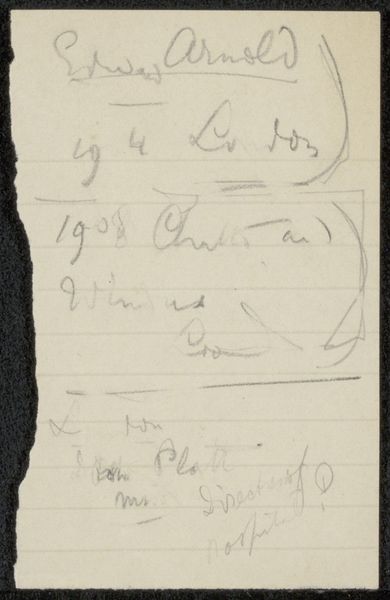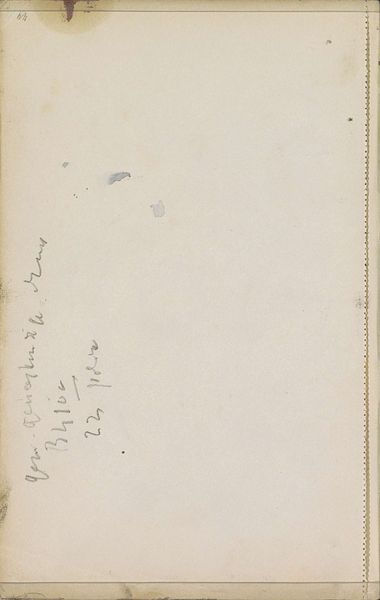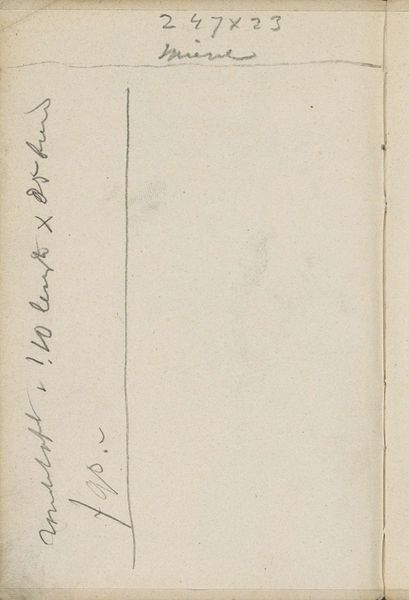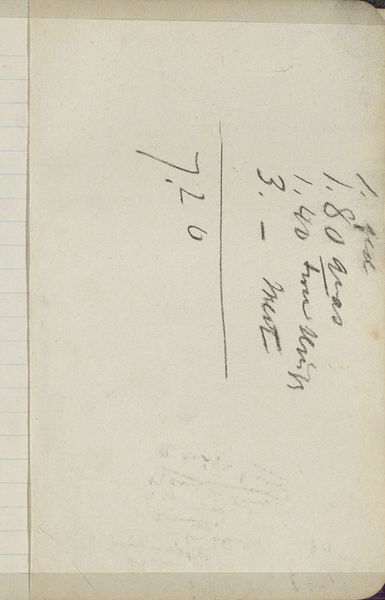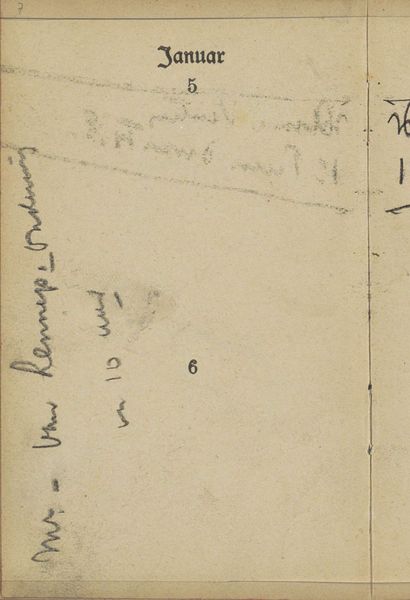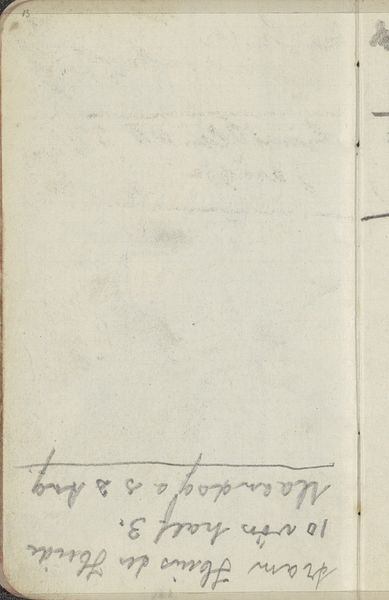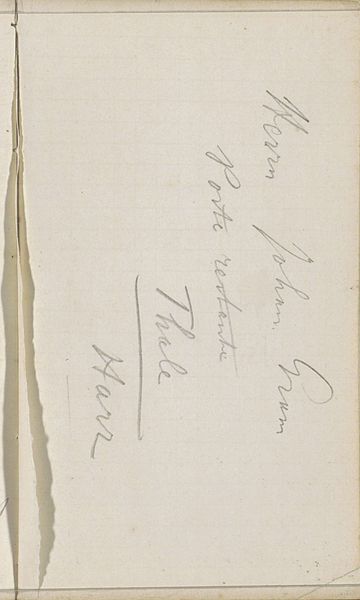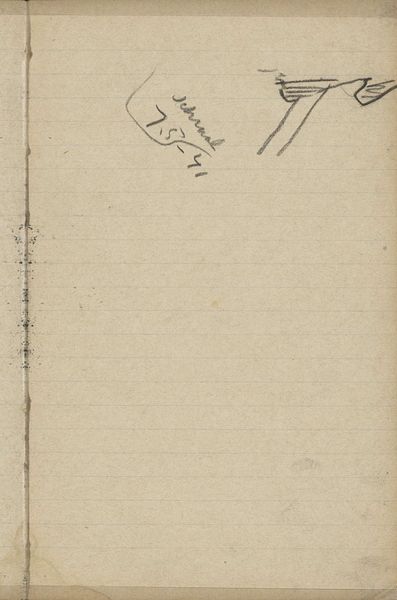
Copyright: Rijks Museum: Open Domain
Curator: Here we have "Notities over kunstwerken," or "Notes on artworks," a mixed-media piece by Gerrit Willem Dijsselhof, created sometime between 1876 and 1924. It's currently held in the Rijksmuseum. Editor: At first glance, it’s simply a page filled with elegant handwriting, almost like a snippet from a personal journal. It seems very intimate and immediate. Curator: Precisely. Dijsselhof was quite interested in the aesthetic qualities of handwriting and typography. Look closely, and you'll see how the ink interacts with the paper; it’s really about line, form, and the arrangement of these handwritten notes. Editor: I am intrigued by the deliberate placement of each set of notations; it’s clear Dijsselhof put emphasis on the layout, transforming functional notes into an artwork itself. There's a unique form of control and artistic license on display. It also highlights a connection to intimism, which isn’t necessarily obvious to the typical art viewer. Curator: Absolutely. These aren’t just random scribbles; they represent Dijsselhof's deep engagement with design and typography as a valid artistic expression, rather than merely a functional tool. Considering his artistic circles, there would have been debate on what comprised valid forms of art at the time. Editor: It pushes back on our traditional understanding of art's exclusivity, as well as how gendered practices are valued within these types of historical, artistic conversations. Handwriting is a deeply personal thing. In elevating these "notes" he blurs the line of high and low art; the private and public. Curator: I find myself reflecting on the role institutions play in ascribing artistic significance. Something that perhaps in its time was fleeting, has been cemented as having importance by being included within a museum's holdings. Editor: In that sense, isn’t the presentation here a statement of sorts? What seems like throwaway text or documentation holds immense weight, pushing us to ask questions about not only how we come to decide what we consume as ‘art’, but whose labor goes unnoticed in this industry? Curator: I find myself wanting to learn about the unseen art that it is referencing. Editor: Yes, and this invites questions about art and life and their relationship; how things regarded previously as ephemeral are brought into institutions to encourage close viewings by patrons like us.
Comments
No comments
Be the first to comment and join the conversation on the ultimate creative platform.

